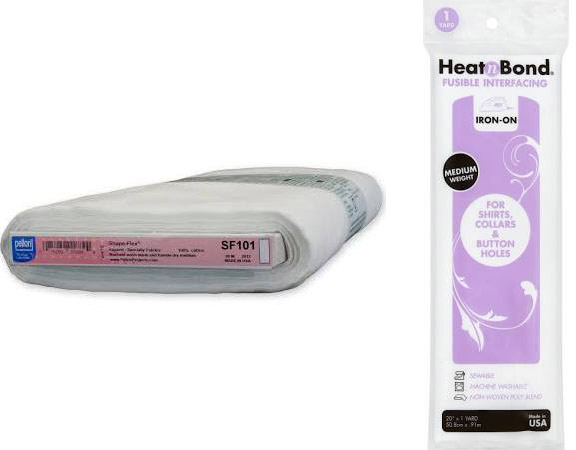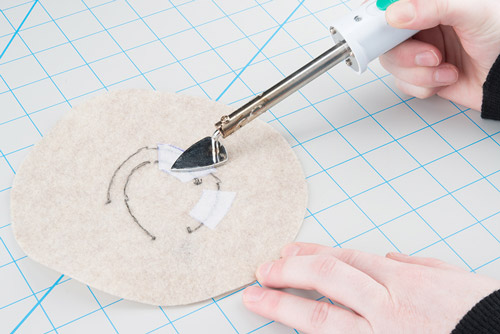Insulation Techniques for e-Textiles
Fusible Interfacing
Fusible interfacing is typically used to add some structure or strength to parts of garments such as necklines or buttonholes. We'll be using interfacing to cover conductive thread traces in wearables projects.
Difficulty: Easy
Drying/Setting Time: None
Mess Level: Minimal
Materials Needed
- Fusible Interfacing
- Iron, Ironing Board
- Parchment Paper (optional, to protect the iron from any adhesive ironed by mistake)
- Scissors
- Marker
Choosing Interfacing
Interfacing comes in many types, from iron-on to sewable, heavy duty to light weight. It can be found at most craft and hobby stores like JoAnn Fabrics, Michaels, Hobby Lobby, or fabric stores.
Most fusible interfacings will have adhesive on one side. The adhesive (bumpy side with small glue droplets) presses against the fabric and melts to it when ironed, leaving a soft backing on the lining of your fabric.
When you go to the store look for a fusible or iron-on web or interfacing - make sure that it is one-sided adhesive. Some stores sell a double sided iron-on product made for fusing two pieces of fabric together, we won't need that. Some common brands are Heat'n Bond (sold in a package) and Pellon (sold on a bolt as cut by the yard).
Preparing Your Circuit
Place some interfacing (adhesive side down) over the back of your project.
Draw on the interfacing to mark out small pieces to cover the conductive thread. Be careful to leave some room around any components so the interfacing doesn't cover them. The heat from the iron could be damaging to LilyPad pieces. Use a piece of parchment paper between the project and your iron to protect from any adhesive accidentally transferring to the iron.
Pros:
- No wet paint or glue to deal with
- Quickest method of insulation
Cons:
- Some fabrics don't respond well to heat and could melt when using the iron setting needed to activate the adhesive - always check your fabric or do a test on a scrap piece before ironing.
- This method isn't great for tiny projects, or ones with components very close
Examples:
This LilyPad powered light up sweatshirt uses interfacing to protect the stitching and for the wearer's comfort.


